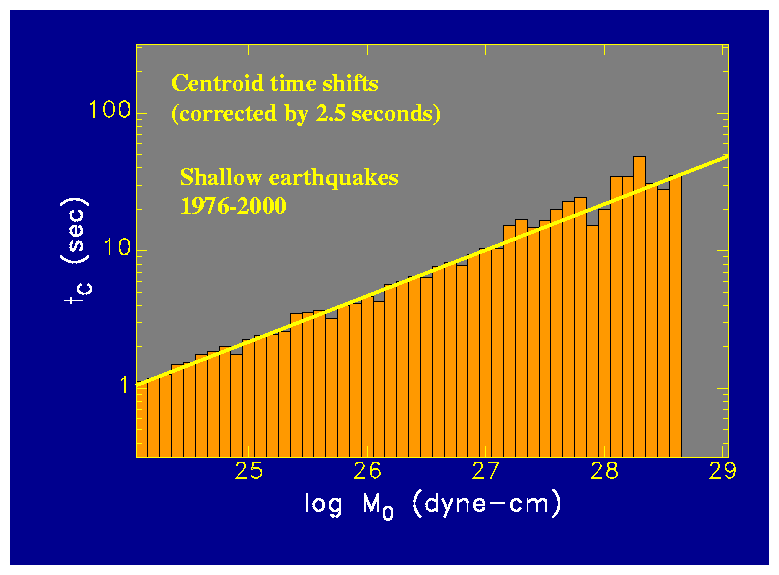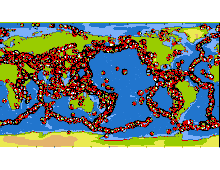
|
CMT Earthquake Gallery |

|
CMT Earthquake Gallery |
CMT focal mechanism for the April 20, 2002, earthquake, with other CMT focal mechanisms for eastern North America. Note the similarity of the orientation of maximum compression for all of these events.
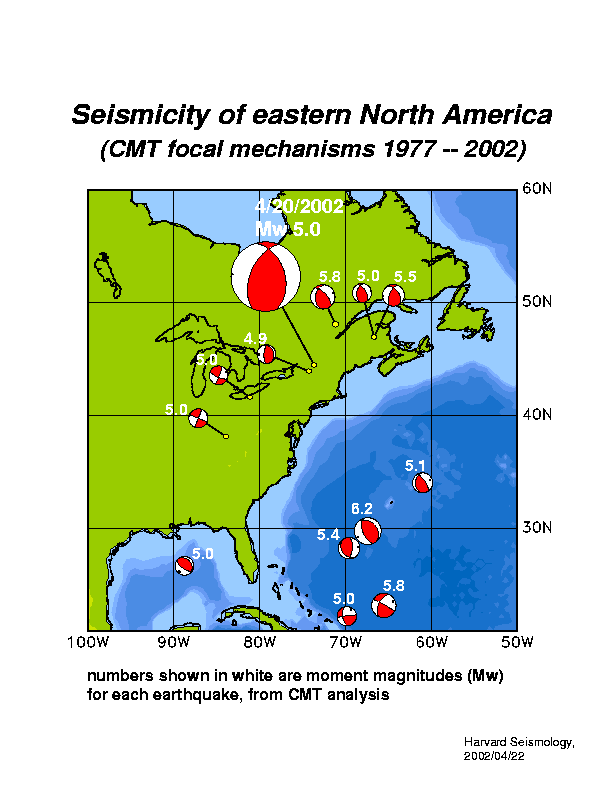
This oceanic intraplate earthquake occurred in a region where there is documented seismic activity, but the relatively large magnitude (Mw=5.5) makes the event unusual. Note the variety of focal mechanisms in this region. There is no consistency of P- or T-axis orientations, suggesting that the earthquakes reflect local rather than regional stresses.
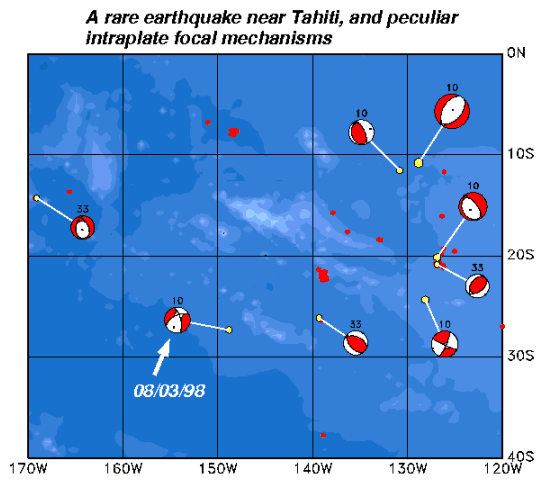
This Mw=5.2 earthquake occurred at mantle depth beneath southern Tibet and belongs to a class of rare earthquakes first described by Chen et al. (JGR, 1981). These mantle earthquakes tend to have T-axes oriented East-West and therefore represent similar strains as the much more common earthquakes in the shallow crust.
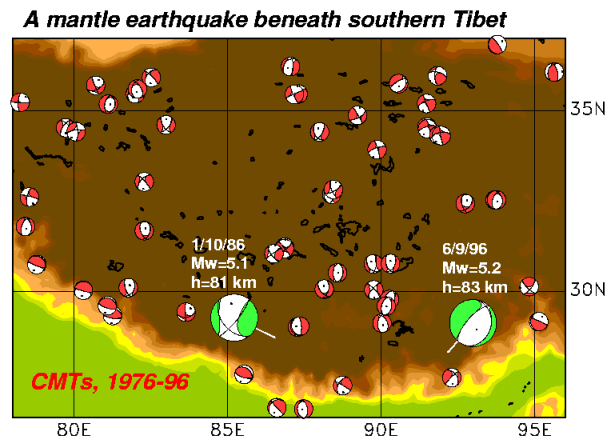
This Mw=5.7 earthquake occurred at shallow depth near the 1984 "Tori Shima" earthquake, and exhibits a nearly identical anomalous CLVD focal mechanism. This focal geometry was proposed to be caused by magma injection associated with submarine volcanism (Kanamori et al., JGR, 1993), but rupture on non-planar volcano ring-faults may be a more plausible explanation (Ekström, EPSL, 1996).
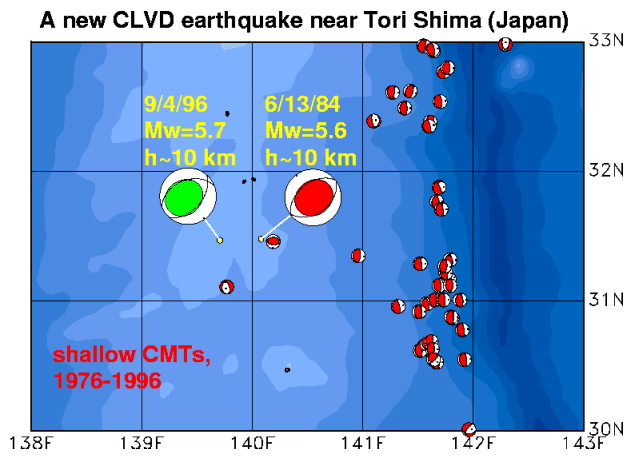
Starting in 1994, an increase in the rate of moment release is seen in the cumulative moment calculated from earthquakes in the CMT catalog. The more rapid moment release is seen to be caused exclusively by a few large earthquakes. The rate of moment release for smaller earthquakes remains nearly constant.
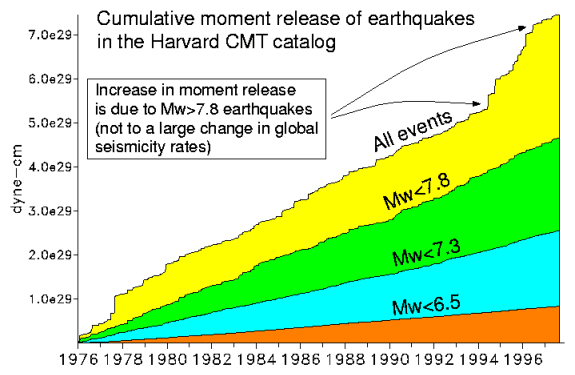
The relative frequency of occurrence for small relative to big earthquakes can be examined using the Harvard CMT catalog. The typical b-value in a traditional Gutenberg-Richter magnitude-frequency graph is 1.0. Given the relationship between seismic moment and magnitude, this corresponds to a B-value of 2/3, relating the log(number of earthquakes) with the log(seismic moment). The figure shows that this relationship is quite appropriate for shallow earthquakes in the CMT catalog.
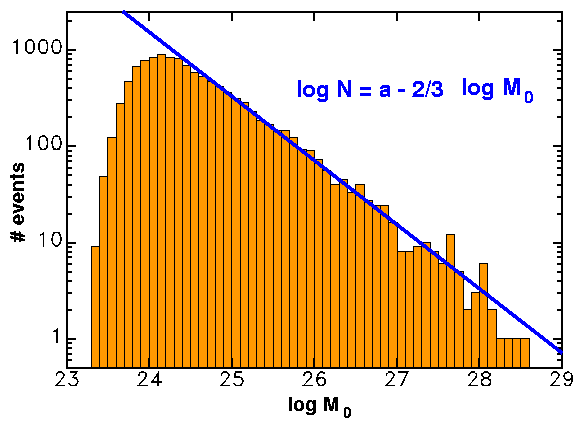
The duration of moment release can be examined by comparing the centroid time shift (the difference between the centroid time and the origin time) for earthquakes of varying moment. In the figure we have averaged the centroid time shifts for earthquakes of moments that fall in different ranges. All centroid time shifts have been reduced by 2.5 seconds to account for a baseline difference between PREM and JB travel time tables. The data are well fit by a relationship that says that the centroid time shift is proportional to the cube root of the scalar moment. The centroid time shift can be interpreted as half of the total duration.
